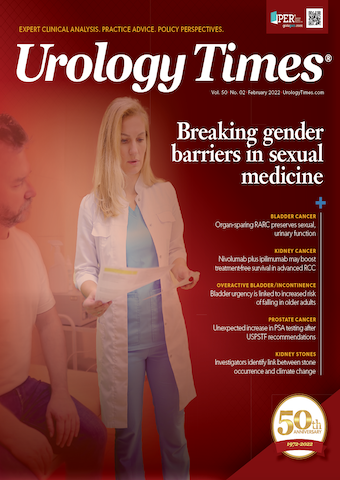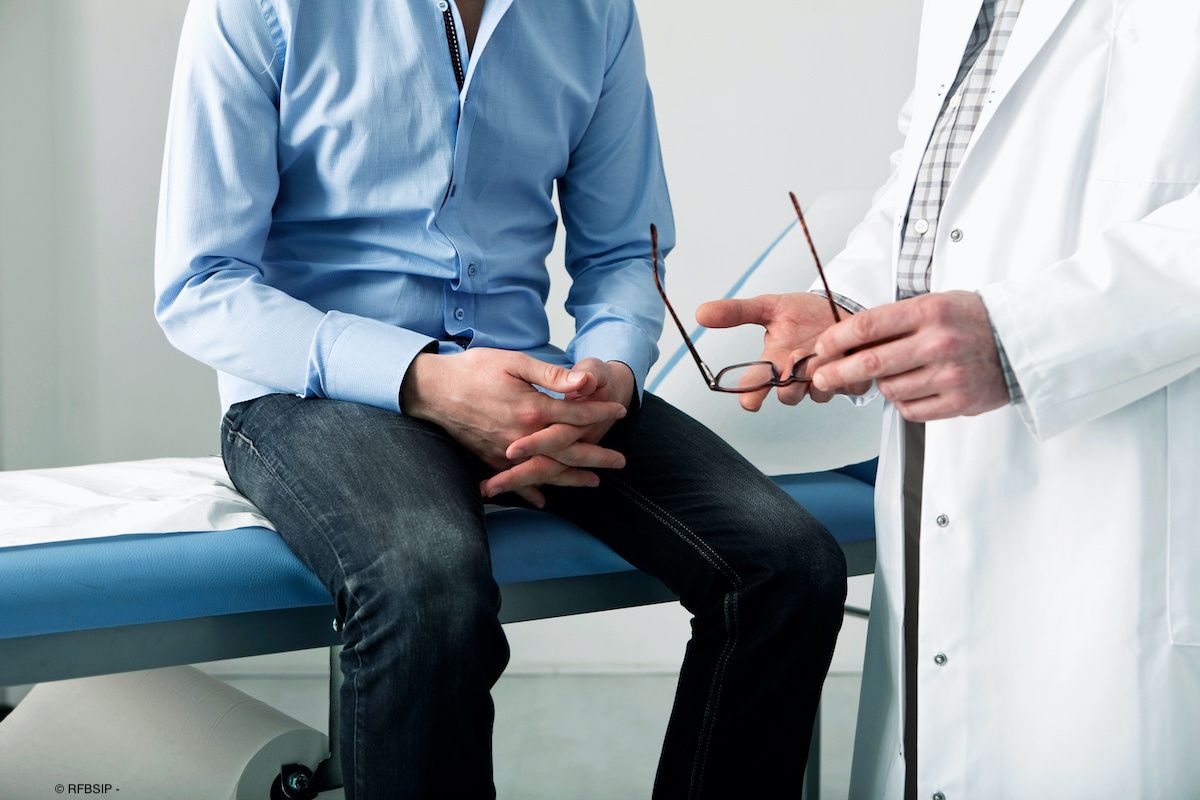Publication
Article
Urology Times Journal
Golden Jubilee: Looking back at 50 years of urology in benign diseases
Author(s):
"The devices, telemedicine and remote care, and outpatient surgery risk us losing the human connection we had with the patient, as time spent with them is at a premium today," writes Gopal H. Badlani, MD.
Gopal H. Badlani, MD

Badlani, professor and vice chair of urology at Wake Forest Baptist Health High Point Medical Center, Winston-Salem, North Carolina, is a coeditor-in-chief for Urology Times®.
Innovation has changed the landscape of how we practice urology today. In every aspect of urological care, minimally invasive approaches with the use of devices prevail. Patients have benefited from the decline in morbidity and need for hospitalization, although one could argue care has become much more expensive.
Stones
In 1955, Willard Goodwin, MD, while trying to perform a renal arteriogram, placed a needle into the collecting system of a hydronephrotic kidney and performed the first antegrade nephrostogram. He left a tube to drain the kidney, thereby placing the first nephrostomy tube.
But perhaps the greatest contribution to the field of benign urology was the birth of endourology at the Veterans Administration Hospital in Minneapolis, Minnesota, in the late 1970s under the direction of Arthur D. Smith, MD. Endourology transformed the approach to the upper tract from maximally invasive to minimally invasive.
In 1978, Smith would describe the first antegrade stent placement when he introduced a Gibbons stent through a percutaneous nephrostomy in a patient with a reimplanted ureter. Smith would coin the term endourology to describe closed, controlled manipulation of the genitourinary tract. His collaboration with team of urologists, interventional radiologists, and medical inventors from device companies such as Cook and Boston Scientific, would lead to numerous innovations that would further advance percutaneous nephrolithotomy (PCNL).
In the 1980s, the process of renal access and tract dilation was improved, and the use of a rigid cystoscope was replaced by offset nephroscopes with a large, straight working channel. Radiographic innovations, including improvements in fluoroscopy, would further aid in renal access. The development of various lithotripsy devices and the introduction of the holmium laser improved the efficiency of stone fragmentation and clearance.1 The increased clinical experience and utilization of PCNL would lead to the characterization of stone-free rates and complications for the procedure. Parallel to this effort was the development of the ureteroscope. Enrique Pérez-Castro Ellendt, MD; Edward S. Lyon, MD; and Demetrius H. Bagley, MD, blazed the trail.2
Flexible ureteroscopy, initiated in Japan with Yoshio Aso, MD, is currently a standard. Christian G. Chaussy, MD, working with Dornier in Germany, led the evolution of the stone lithotripsy with extracorporeal shock wave lithotripsy, also in the 1970s.3 The birth of the Endourological Society in 1984 allowed the expansion of these techniques worldwide and provided a home for the innovators, companies, and the biomedical engineers to come together.
Benign prostatic hyperplasia (BPH)
Open prostate surgery evolved to monopolar transurethral resection of the prostate in the early part of the 20th century. Although Marco Caine, MD, in Israel introduced the use of α-blockers, it was not until 1990s when landmark trials on α-blockers4 and finasteride (Proscar)5 changed the paradigm of medical management for benign prostate enlargement.
Development of multiple lasers, bipolar energy, and minimally invasive devices for heat therapy to implanted devices reduced morbidity. Today, based on the American Urological Association guideline for male lower urinary tract symptoms due to BPH,6 there are more than 34 options. Treatment can be tailored to the patient’s desire to preserve ejaculation or avoid a catheter at the expense of less improvement in flow, and longevity of the procedure effects when compared with ablative therapies. The spectrum beyond medications include, from a simple removable device such as iTIND, to the automated Aquablation, and the robotic simple prostatectomy.
Incontinence
In the past, care of women with incontinence was largely the domain of the gynecologist, although open surgical correction was a still a procedure I learned in urological training. In 1973, Thomas A. Stamey, MD, modified the Pereyra procedure, adding endoscopic control to put it firmly in the hands of the urologist.7 A plethora of suspension procedures followed with Shlomo Raz, MD, leading the charge. The concept of bladder neck suspension was turned upside down by Ulf Ulmsten, MD, and Peter Petros, MD, with the introduction of the midurethral tension-free tape. It is now the gold standard for the management of stress urinary incontinence. It made the traditional fascial sling almost obsolete until its return with the use of mesh and its subsequent controversy. The concept of bulking the urethra saw a meteoric rise in the 1980s but, despite a promise of many new materials, its use has fallen by the wayside.
Laparoscopy, used largely by gynecologists, saw a dramatic rise in urology for organ extirpation for cancer. The robot also has more or less replaced the use of the laparoscope in urology for reconstructive procedures.
The field that has remained exciting and promising, but yet a step too far, is tissue engineering. The Lancet article describing the implanted bladder excited the world.8 Alas, after 20-plus years of continued effort, the bladder and the urinary conduit have not reached a clinical use. Similarly, the use of adult muscle-derived cells for incontinence remains an area of research despite more than 3 decades of effort.9 The field of chemokine therapy holds a promise to replace cell therapy.10
The use of implantable devices for erectile dysfunction and urinary sphincter from F. Bradley Scott, MD; Gerald W. Timm, MD; and William E. Bradley, MD, made many men happy. In the past 2 decades, the neuromodulation device pioneered by Richard A. Schmidt, MD; and Emil A. Tanagho, MD, has helped many women and men with refractory bladder overactivity. The use of onabotulinumtoxinA (Botox) in the clinic has made bladder augmentation a historical procedure.
Anatomy and diseases have not changed, yet, except for open surgery in the abdomen, what I learned as a resident in the 1970s has been replaced by the evolving innovation. The devices, telemedicine and remote care, and outpatient surgery risk us losing the human connection we had with the patient, as time spent with them is at a premium today.
“Too often, we underestimate the power of a touch, a smile, a kind word, a listening ear, an honest compliment, or the smallest act of caring, all of which have the potential to turn a life around.”—Leo Buscaglia
References
1. Patel SR, Nakada SY. The modern history and evolution of percutaneous nephrolithotomy. J Endourol. 2015;29(2):153-157. doi:10.1089/end.2014.0287
2. Rajamahanty S, Grasso M. Flexible ureteroscopy update: indications, instrumentation and technical advances. Indian J Urol. 2008;24(4):532-537. doi:10.4103/0970-1591.44263
3. Chaussy CG. ESWL: past, present, and future. J Endourol. 1988;2(2):97. doi:10.1089/end.1988.2.97
4. Lepor H, Williford WO, Barry MJ, et al. The efficacy of terazosin, finasteride, or both in benign prostatic hyperplasia. Veterans Affairs Cooperative Studies Benign Prostatic Hyperplasia Study Group. N Engl J Med. 1996;335(8):533-540. doi:10.1056/NEJM199608223350801
5. McConnell JD, Bruskewitz R, Walsh P, et al. The effect of finasteride on the risk of acute urinary retention and the need for surgical treatment among men with benign prostatic hyperplasia. N Engl J Med. 1998;338(9):557-563. doi:10.1056/NEJM199802263380901
6. Foster HE, Barry MJ, Dahm P, et al. Surgical management of lower urinary tract symptoms attributed to benign prostatic hyperplasia: AUA guideline. J Urol. 2018;200(3):612-619. doi:10.1016/j.juro.2018.05.048
7. Stamey TA. Endoscopic suspension of the vesical neck for urinary incontinence. Surg Gynecol Obstet. 1973;136(4):547-554.
8. Atala A, Bauer SB, Soker S, Yoo JJ, Retik AB. Tissue-engineered autologous bladders for patients needing cystoplasty. Lancet. 2006;367(9518):1241-1246. doi:10.1016/S0140-6736(06)68438-9
9. Chancellor MB, Peters KM, Benson KD, et al. An evaluation of women with persistent or recurrent stress urinary incontinence (SUI) following surgery in a double-blind, randomized, controlled trial comparing safety and efficacy of autologous muscle derived cells for urinary sphincter repair (AMDC-USR) with placebo (PBO). Presented at: 2021 American Urological Association Annual Meeting; September 10-13, 2021; virtual. Abstract PD06-02.
10. Williams JK, Dean A, Badra S, et al. Cell versus chemokine therapy in a nonhuman primate model of chronic intrinsic urinary sphincter deficiency. J Urol. 2016;196(6):1809-1815. doi:10.1016/j.juro.2016.05.106




























